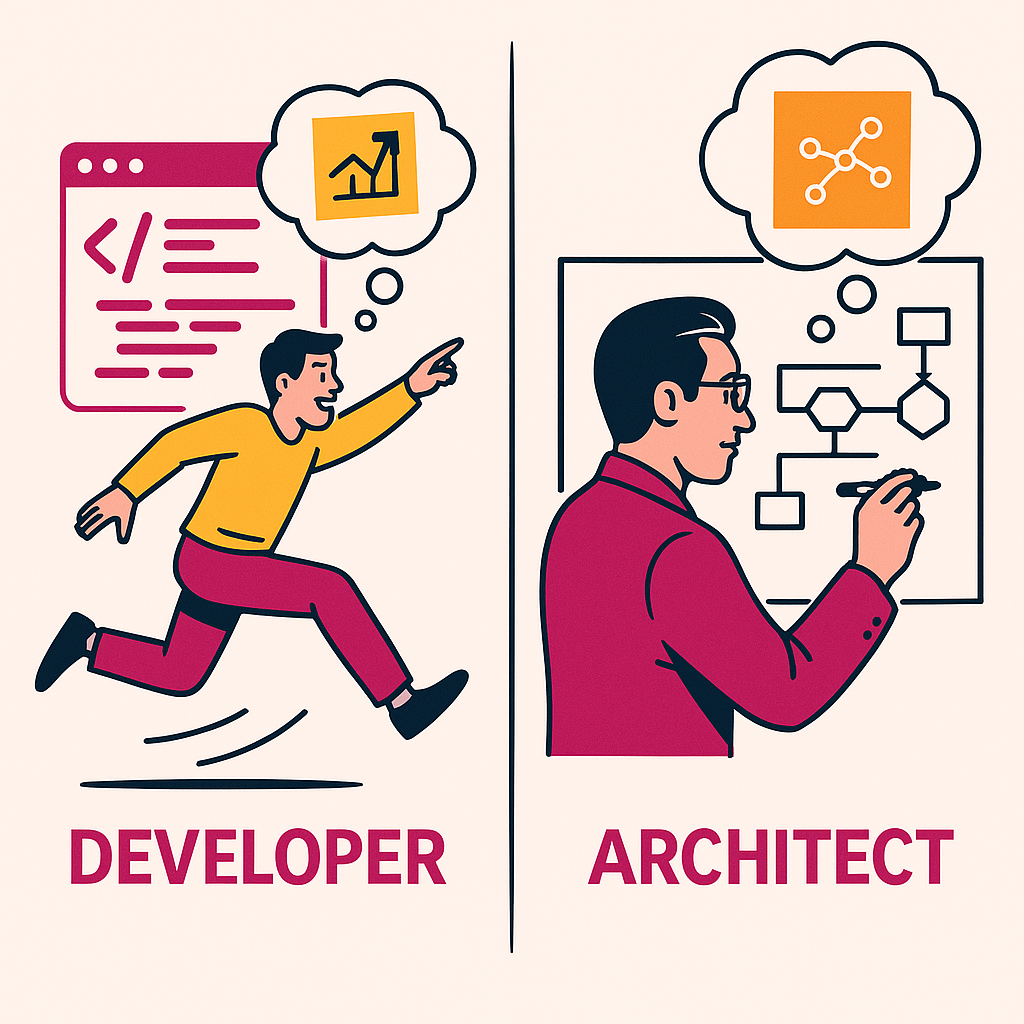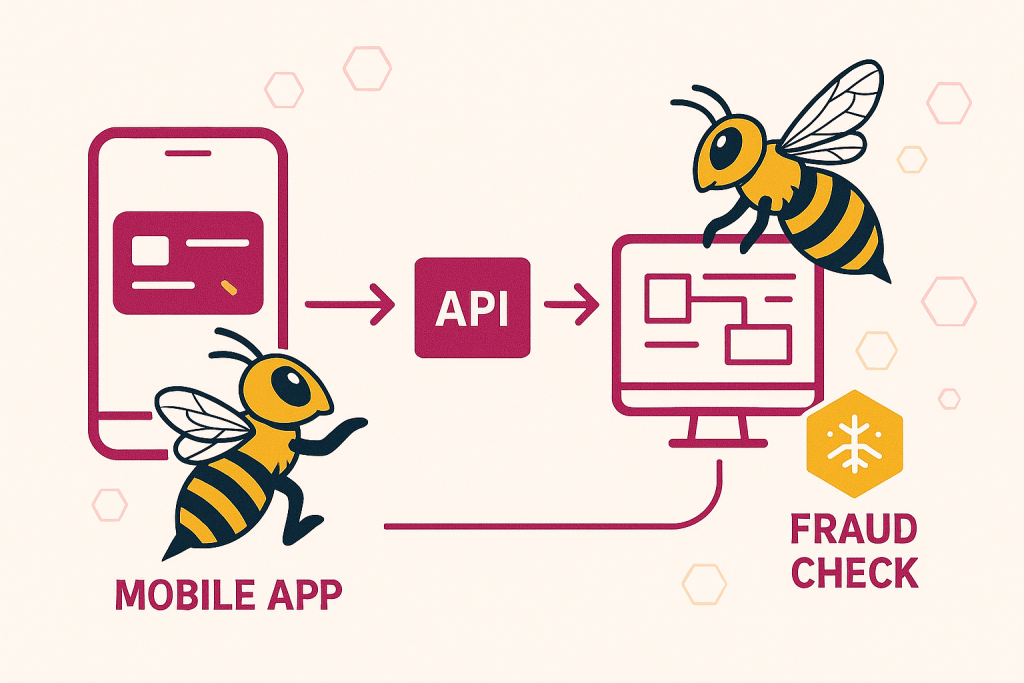Start designing smarter systems — no fancy job title required.
You don’t need a title to think like a solution architect.
If you’ve ever had to balance trade- offs, think through user needs, or explain why a quick fix might create long- term pain – congratulations, you’re already using architecture thinking.
And at BeeStack, we believe that clear, confident design is for everyone – not just the people with “Architect” in their email signature.
Let’s break down what solution architecture really means and how you can start thinking like an architect – even in your current role.
- What’s the actual problem?
- Who’s involved?
- What constraints or risks are at play?
- How can this scale without becoming a monster later?
You don’t need to have “architect” in your job title to start asking those same questions.
Five Ways to Start Thinking Like a Solution Architect

- What systems are impacted?
- What happens if someone unfreezes a card while a fraudulent transaction is pending?
- Should customer support be notified?
By zooming out, you begin to see the whole system – not just the feature.
- Is this about customer experience?
- Compliance with new regulations?
- Reducing fraud
When you understand the real goal (e.g. “Reduce login time while maintaining security”), you can explore better, simpler solutions – maybe even without full biometrics.
- What services are involved?
- How does data flow between systems?
- Where are the weak spots?
Example: In the debit card freeze flow, you sketch a diagram that includes:

- Mobile app ➜ API gateway ➜ Card management system
- Real- time status push to transaction monitoring service
- Notification to customer via app and SMS
Now, everyone can see the dependencies – before the first line of code is written.
- What if international customers need real- time access?
- What happens if this rule changes in the future?
You design with extensibility in mind: build a configuration setting or policy rules engine instead. It’s about building flexibility without overcomplicating the system.

- Product teams to clarify goals
- UX teams to understand user journeys
- DevOps to map out deployment risks
- Compliance to check for regulatory constraints
Example: While discussing the card freeze feature, a compliance officer raises a privacy concern you hadn’t considered.
You revise your approach – before writing code – saving time and reducing risk.



